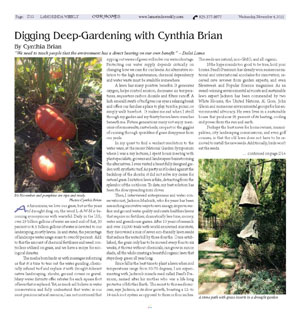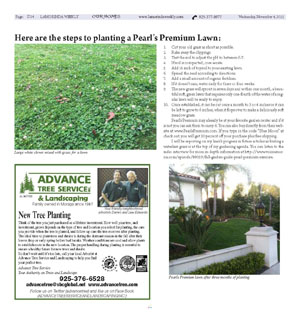|
|
Published Nevember 4th, 2015
|
Digging Deep-Gardening with Cynthia Brian
|
|
| By Cynthia Brian |
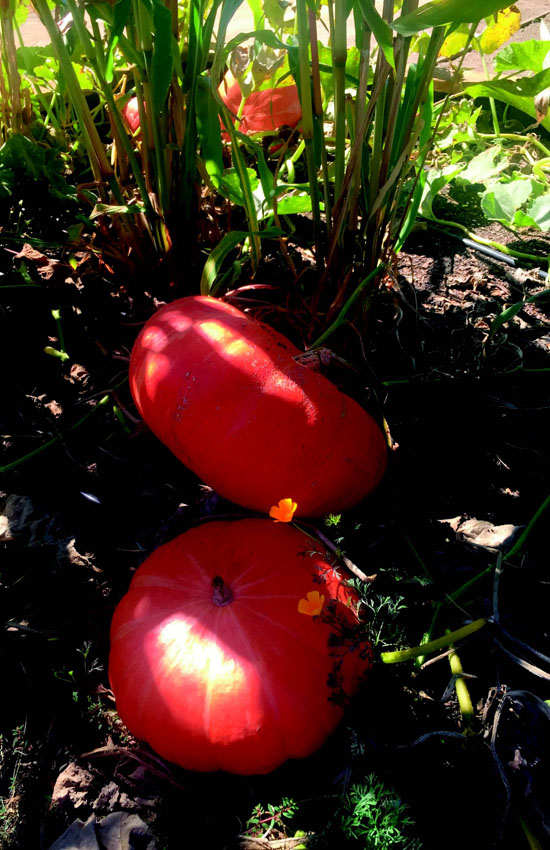 |
| It's November and pumpkins are ripe and ready. Photos Cynthia Brian |
"We need to teach people that the environment has a direct bearing on our own benefit." - Dalai Lama
 As Americans, we love our grass, but as the years of drought drag on, the word L-A-W-N is becoming synonymous with wasteful. Daily in the U.S., over 29 billion gallons of water are used and of that, 30 percent or 8. 5 billion gallons of water is devoted to our landscaping, mostly lawns. In arid states, the percentage of landscape water usage soars to over 60 percent. Add to this the amount of chemical fertilizers and weed controllers utilized on grass, and we have a recipe for ecological disaster. As Americans, we love our grass, but as the years of drought drag on, the word L-A-W-N is becoming synonymous with wasteful. Daily in the U.S., over 29 billion gallons of water are used and of that, 30 percent or 8. 5 billion gallons of water is devoted to our landscaping, mostly lawns. In arid states, the percentage of landscape water usage soars to over 60 percent. Add to this the amount of chemical fertilizers and weed controllers utilized on grass, and we have a recipe for ecological disaster.
 The media bombards us with messages informing us that it is time to tear out the water guzzling, chemically infused turf and replace it with drought-tolerant native landscaping, shrubs, ground covers or gravel. Many water districts offer rebates for each square foot of lawn that is replaced. Yet, as much as I believe in water conservation and fully understand that water is our most precious natural resource, I am not convinced that ripping out waves of green will solve our water shortage. Protecting our water supply depends critically on changing how we care for our lawns. An alternative solution to the high maintenance, chemical dependency and water waste must be available somewhere. The media bombards us with messages informing us that it is time to tear out the water guzzling, chemically infused turf and replace it with drought-tolerant native landscaping, shrubs, ground covers or gravel. Many water districts offer rebates for each square foot of lawn that is replaced. Yet, as much as I believe in water conservation and fully understand that water is our most precious natural resource, I am not convinced that ripping out waves of green will solve our water shortage. Protecting our water supply depends critically on changing how we care for our lawns. An alternative solution to the high maintenance, chemical dependency and water waste must be available somewhere.
 A lawn has many positive benefits. It generates oxygen, helps control erosion, decreases air temperatures, sequesters carbon dioxide and filters runoff. A lush emerald swath of turf gives our eyes a relaxing break and offers our families a place to play, tumble, picnic, or simply walk barefoot. It makes me sad when I stroll through my garden and my thirsty brown lawn crunches beneath me. Future generations many not enjoy memories of somersaults, cartwheels, croquet or the giggles of running through sprinklers if grass disappears from our yards. A lawn has many positive benefits. It generates oxygen, helps control erosion, decreases air temperatures, sequesters carbon dioxide and filters runoff. A lush emerald swath of turf gives our eyes a relaxing break and offers our families a place to play, tumble, picnic, or simply walk barefoot. It makes me sad when I stroll through my garden and my thirsty brown lawn crunches beneath me. Future generations many not enjoy memories of somersaults, cartwheels, croquet or the giggles of running through sprinklers if grass disappears from our yards.
 In my quest to find a verdant resolution to the water wars, at the recent National Garden Symposium where I was a key lecturer, I spent hours meeting with plant specialists, growers and landscapers brainstorming the alternatives. I even visited a beautifully designed garden with synthetic turf. As pretty as it looked against the backdrop of the shrubs, it did not solve my desire for natural grass. Imitation lawn is fake, detracting from the splendor of the outdoors. To date, my best solution has been the slow spreading mini clover. In my quest to find a verdant resolution to the water wars, at the recent National Garden Symposium where I was a key lecturer, I spent hours meeting with plant specialists, growers and landscapers brainstorming the alternatives. I even visited a beautifully designed garden with synthetic turf. As pretty as it looked against the backdrop of the shrubs, it did not solve my desire for natural grass. Imitation lawn is fake, detracting from the splendor of the outdoors. To date, my best solution has been the slow spreading mini clover.
 Then, I interviewed entrepreneur and water conservationist, Jackson Madnick, who for years has been researching innovative ways to save energy, improve surface and ground water quality and create healthier lawns that require no fertilizer, dramatically less time, money, water and greenhouse gasses. After 10 years of research and over 10,000 trials with world-renowned scientists, they discovered a mix of seven eco-friendly lawn seeds that reduce the water bill by three-fourths. Once established, the grass only has to be mowed every four to six weeks, it thrives without chemicals, can grow in sun or shade, all the while creating a beautiful organic lawn that stays deep green all year long. Then, I interviewed entrepreneur and water conservationist, Jackson Madnick, who for years has been researching innovative ways to save energy, improve surface and ground water quality and create healthier lawns that require no fertilizer, dramatically less time, money, water and greenhouse gasses. After 10 years of research and over 10,000 trials with world-renowned scientists, they discovered a mix of seven eco-friendly lawn seeds that reduce the water bill by three-fourths. Once established, the grass only has to be mowed every four to six weeks, it thrives without chemicals, can grow in sun or shade, all the while creating a beautiful organic lawn that stays deep green all year long.
 Since fall is the best time to plant a lawn when soil temperatures range from 50-70 degrees, I am experimenting with Jackson's miracle seed called Pearl's Premium, named after his mother who was a life-long protector of Mother Earth. The secret to this seed's success, says Jackson, is its slow growth, boasting a 12- to 14-inch root system as opposed to three or four inches. The seeds are natural, non-GMO, and all organic. Since fall is the best time to plant a lawn when soil temperatures range from 50-70 degrees, I am experimenting with Jackson's miracle seed called Pearl's Premium, named after his mother who was a life-long protector of Mother Earth. The secret to this seed's success, says Jackson, is its slow growth, boasting a 12- to 14-inch root system as opposed to three or four inches. The seeds are natural, non-GMO, and all organic.
 If the hype sounds too good to be true, hold your horses. Pearl's Premium has already won numerous national and international accolades for innovation, received rave reviews from garden experts, and even Newsweek and Popular Science magazines. As an award-winning environmental advocate and sustainable lawn expert Jackson has been commended by two White Houses, the United Nations, Al Gore, John Glenn and numerous environmental groups for his environmental advocacy. He even lives in a sustainable house that produces 95 percent of its heating, cooling and power from the sun and earth. If the hype sounds too good to be true, hold your horses. Pearl's Premium has already won numerous national and international accolades for innovation, received rave reviews from garden experts, and even Newsweek and Popular Science magazines. As an award-winning environmental advocate and sustainable lawn expert Jackson has been commended by two White Houses, the United Nations, Al Gore, John Glenn and numerous environmental groups for his environmental advocacy. He even lives in a sustainable house that produces 95 percent of its heating, cooling and power from the sun and earth.
 Perhaps the best news for homeowners, municipalities, city landscaping commissions, and even golf courses, is that the old lawn does not have to be removed to install the new seeds. Additionally, birds won't eat the seeds. Perhaps the best news for homeowners, municipalities, city landscaping commissions, and even golf courses, is that the old lawn does not have to be removed to install the new seeds. Additionally, birds won't eat the seeds.
 Here are the steps to planting a Pearl's Premium Lawn: Here are the steps to planting a Pearl's Premium Lawn:
 1. Cut your old grass as short as possible. 1. Cut your old grass as short as possible.
 2. Rake away the clippings. 2. Rake away the clippings.
 3. Test the soil to adjust the pH to between 6-7. 3. Test the soil to adjust the pH to between 6-7.
 4. If soil is compacted, core aerate. 4. If soil is compacted, core aerate.
 5. Add 1/2 inch of topsoil to your existing lawn. 5. Add 1/2 inch of topsoil to your existing lawn.
 6. Spread the seed according to directions. 6. Spread the seed according to directions.
 7. Add a small amount of organic fertilizer. 7. Add a small amount of organic fertilizer.
 8. If it doesn't rain, water daily for three or four weeks. 8. If it doesn't rain, water daily for three or four weeks.
 9. The new grass will sprout in seven days and within one month, a beautiful soft, green lawn that requires only one-fourth of the water of a regular lawn will be ready to enjoy. 9. The new grass will sprout in seven days and within one month, a beautiful soft, green lawn that requires only one-fourth of the water of a regular lawn will be ready to enjoy.
 10. Once established, it can be cut once a month to 3 or 4 inches or it can be left to grow to 6 inches, when it flops over to make a deliciously soft meadow grass. 10. Once established, it can be cut once a month to 3 or 4 inches or it can be left to grow to 6 inches, when it flops over to make a deliciously soft meadow grass.
 Pearl's Premium may already be at your favorite garden center and if it is not you can ask them to carry it. You can also buy directly from their website at www.PearlsPremium.com. If you type in the code "Blue Moon" at check out, you will get 20 percent off your purchase plus free shipping. Pearl's Premium may already be at your favorite garden center and if it is not you can ask them to carry it. You can also buy directly from their website at www.PearlsPremium.com. If you type in the code "Blue Moon" at check out, you will get 20 percent off your purchase plus free shipping.
 I will be reporting on my lawn's progress in future articles as finding a waterless grass is at the top of my gardening agenda. You can listen to the radio interview for more in-depth information at http://www.voiceamerica.com/episode/88059/fall-garden-guide-pearl-premium-exercise. I will be reporting on my lawn's progress in future articles as finding a waterless grass is at the top of my gardening agenda. You can listen to the radio interview for more in-depth information at http://www.voiceamerica.com/episode/88059/fall-garden-guide-pearl-premium-exercise.

 Since I wanted to give everyone a head start on a possible new lawn alternative, the November Garden Guide will be in the next issue. If you are aware of another solution for organic grass without guilt, send me an email at Cynthia@GoddessGardener.com. We want to avoid the turf wars and embrace sustainability and stewardship of nature where people, pets, and our planet are healthy, safe and happily enjoying the green. Since I wanted to give everyone a head start on a possible new lawn alternative, the November Garden Guide will be in the next issue. If you are aware of another solution for organic grass without guilt, send me an email at Cynthia@GoddessGardener.com. We want to avoid the turf wars and embrace sustainability and stewardship of nature where people, pets, and our planet are healthy, safe and happily enjoying the green.

 Happy Gardening and Happy Growing. Happy Gardening and Happy Growing.
 |
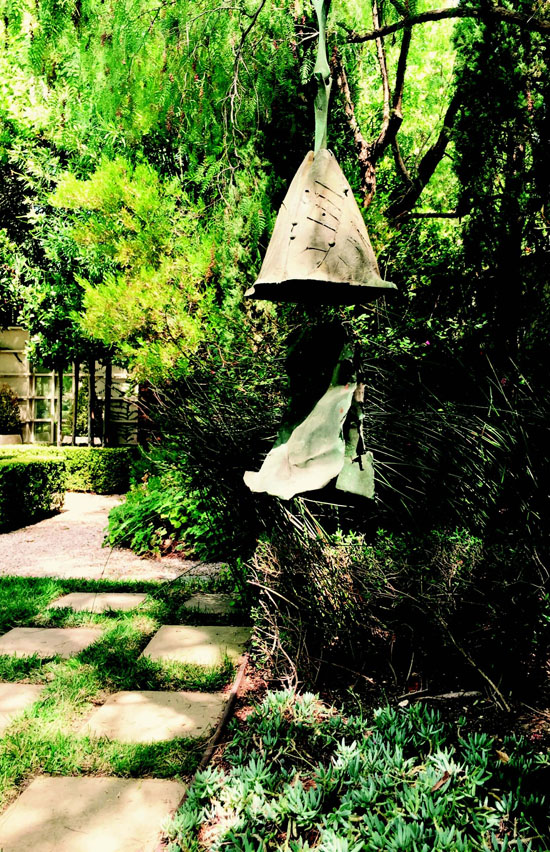 |
| A stone path with grass inserts in a drought garden |
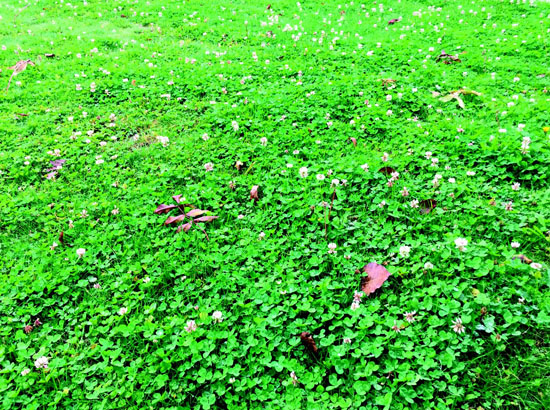 |
| Large white clover mixed with grass for a lawn |
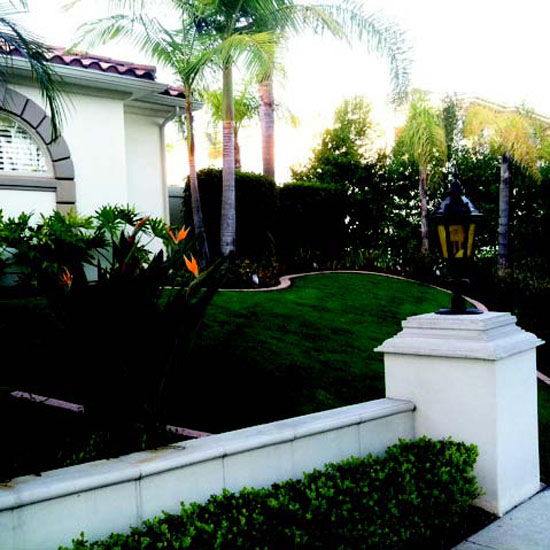 |
| Pearls Premium lawn after three months of planting |
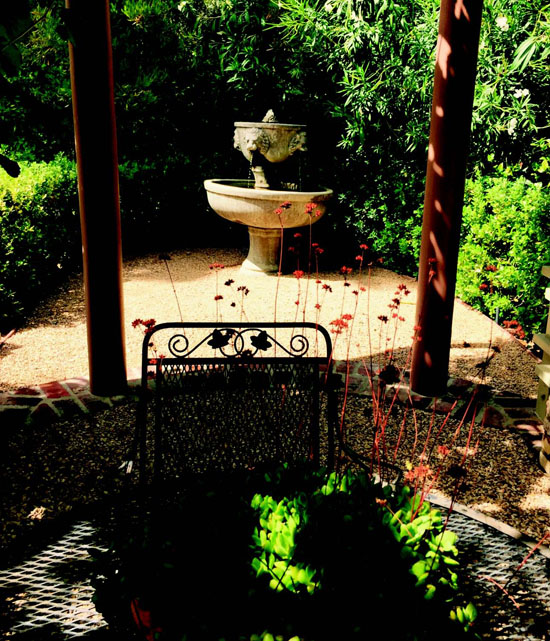 |
| A former lawn replaced by a gravel Zen garden |
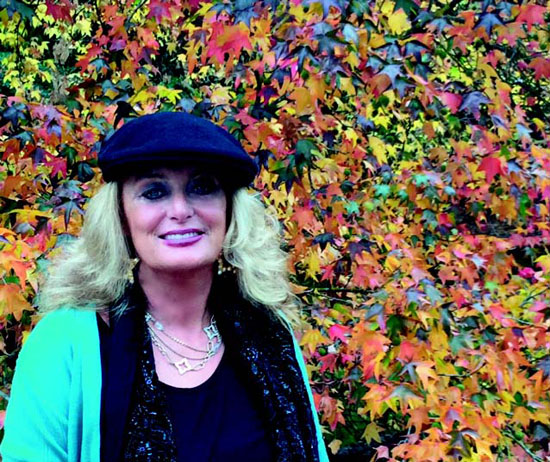 |
Cynthia with fall colors
(c)2015 Cynthia Brian The Goddess Gardener Starstyle(r) Productions, llc Cynthia@GoddessGardener.com www.GoddessGardener.com 925-377-STAR Tune into Cynthia's Radio show at www.StarStyleRadio.net I am available as a speaker, designer, and consultant. |
|
|
|








